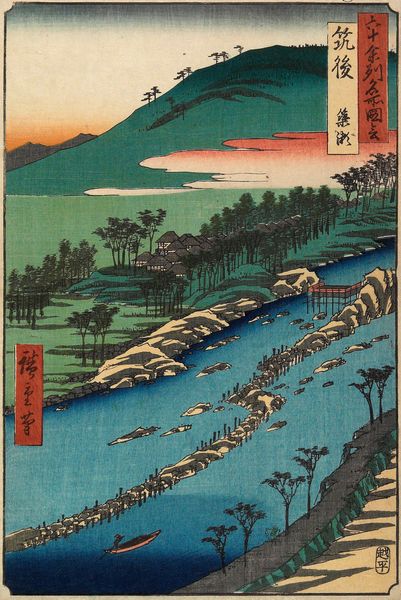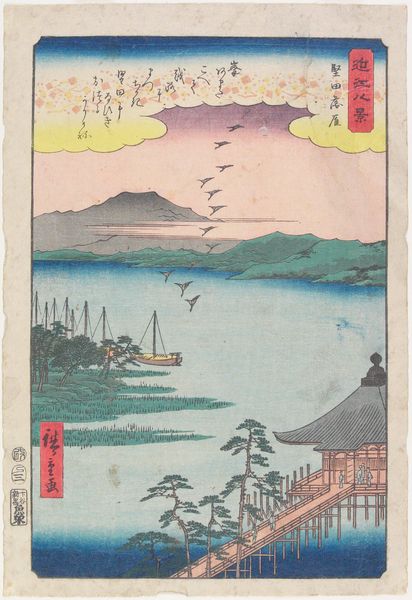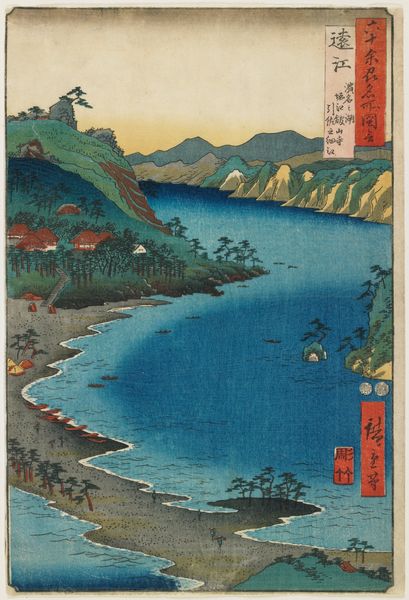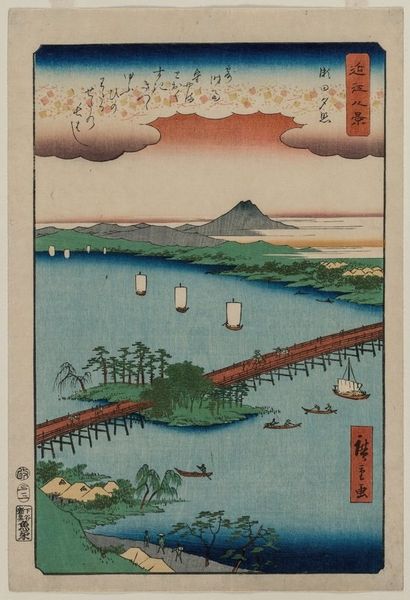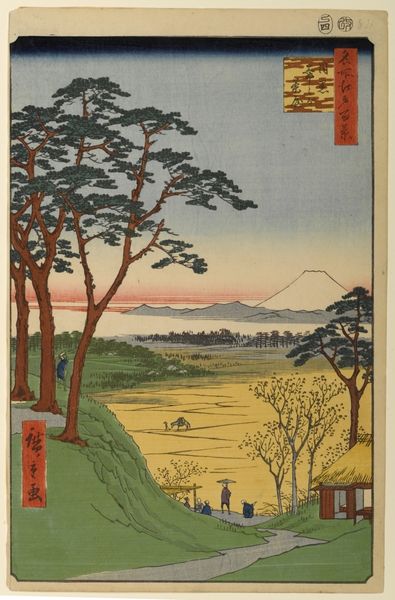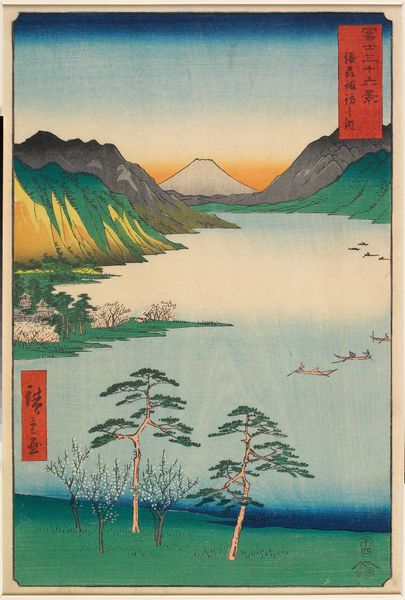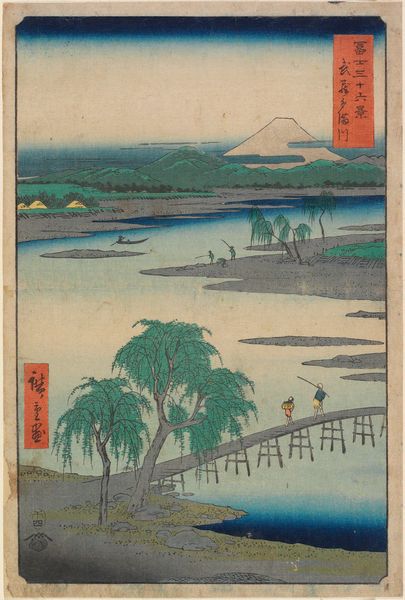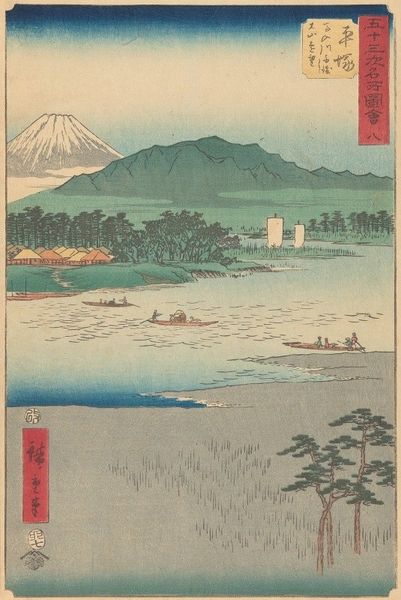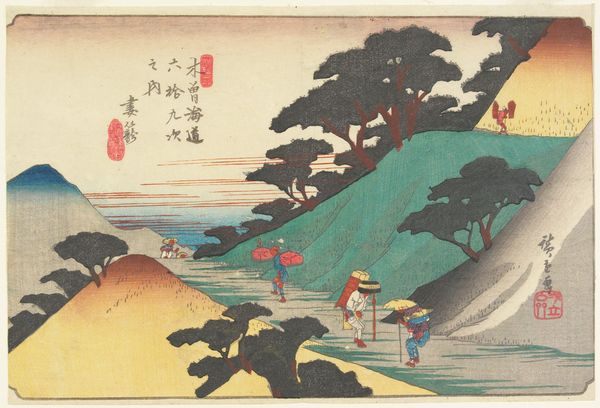
print, paper, watercolor, ink, woodblock-print
# print
#
asian-art
#
landscape
#
ukiyo-e
#
paper
#
watercolor
#
ink
#
woodblock-print
#
watercolor
Dimensions: 13 5/16 × 8 11/16 in. (33.8 × 22 cm) (image, vertical ōban)
Copyright: Public Domain
Curator: Standing before us is “Vesper at Mii Temple,” a print attributed to Utagawa Hiroshige, likely created around 1857. It’s a woodblock print, ink and watercolor on paper, housed here at the Minneapolis Institute of Art. Editor: My initial impression is one of tranquil stillness. The subdued colors and the composition, with its receding planes, evoke a palpable sense of quietude, almost loneliness. It's a melancholic beauty, wouldn't you say? Curator: I think that sense of quiet is tied directly to the print’s cultural and historical context. The Ukiyo-e tradition itself was about capturing fleeting moments of beauty. Hiroshige, specifically, became renowned for his ability to express emotional states through landscapes. The fact it is a woodblock is important—these were designed to reach a broad audience, thereby democratizing access to a sense of natural beauty. Editor: It makes me consider what the print might mean through a modern lens. Is there an element of escapism in its idealized pastoral scene? What social realities is this image consciously overlooking by presenting only serene, uninhabited landscapes? Curator: I appreciate that interrogation. Looking through social and cultural history, one must note that Hiroshige’s work, like much art of his period, often presented idealized, and therefore curated, views of nature. I want to reflect that this aestheticization often hid or ignored difficult living conditions and class divisions within Japanese society at the time. How would these images play within different power dynamics? Who has the right to beauty? Editor: Exactly! And there's also a gendered reading to be had here. Are women present in the scene, beyond what the artist offers through line or symbolic image? What roles could, would, or did women inhabit here? How can we ensure the art remains critical without flattening nuance, and without erasing other voices? Curator: The composition subtly emphasizes these absences. The temple itself is distanced, the few houses suggested through modest roofs, reinforcing a narrative where human presence remains secondary. The enduring value comes from the visual beauty Hiroshige offers to viewers who seek a quiet perspective. Editor: Yes. It reminds us of the complexity inherent in experiencing art, that visual splendor need not exist at the exclusion of all critical engagement, it can exist because of that interrogation.
Comments
No comments
Be the first to comment and join the conversation on the ultimate creative platform.

